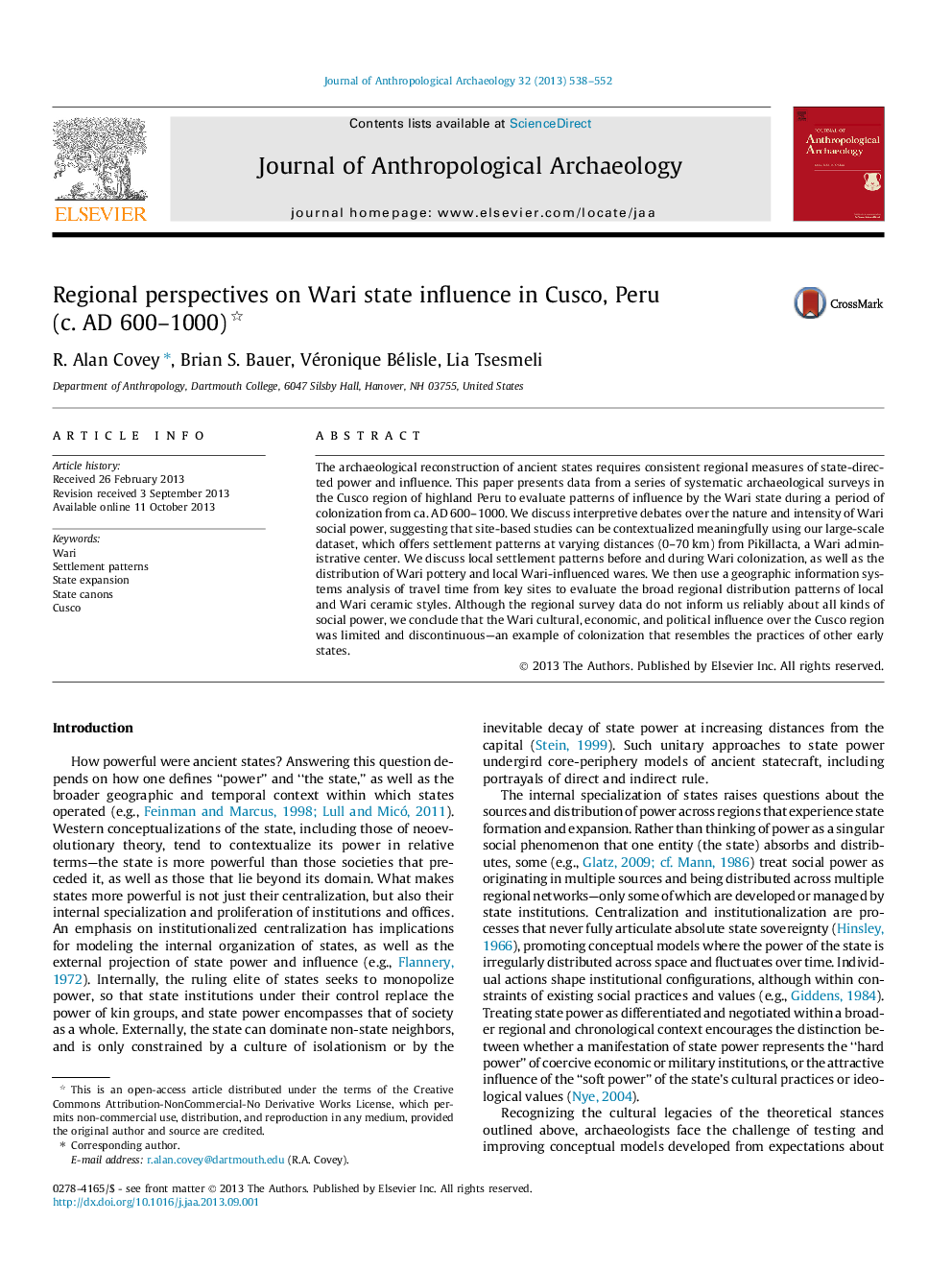| Article ID | Journal | Published Year | Pages | File Type |
|---|---|---|---|---|
| 10498711 | Journal of Anthropological Archaeology | 2013 | 15 Pages |
Abstract
The archaeological reconstruction of ancient states requires consistent regional measures of state-directed power and influence. This paper presents data from a series of systematic archaeological surveys in the Cusco region of highland Peru to evaluate patterns of influence by the Wari state during a period of colonization from ca. AD 600-1000. We discuss interpretive debates over the nature and intensity of Wari social power, suggesting that site-based studies can be contextualized meaningfully using our large-scale dataset, which offers settlement patterns at varying distances (0-70Â km) from Pikillacta, a Wari administrative center. We discuss local settlement patterns before and during Wari colonization, as well as the distribution of Wari pottery and local Wari-influenced wares. We then use a geographic information systems analysis of travel time from key sites to evaluate the broad regional distribution patterns of local and Wari ceramic styles. Although the regional survey data do not inform us reliably about all kinds of social power, we conclude that the Wari cultural, economic, and political influence over the Cusco region was limited and discontinuous-an example of colonization that resembles the practices of other early states.
Keywords
Related Topics
Social Sciences and Humanities
Arts and Humanities
History
Authors
R. Alan Covey, Brian S. Bauer, Véronique Bélisle, Lia Tsesmeli,
